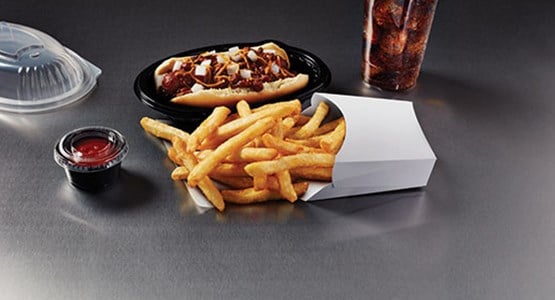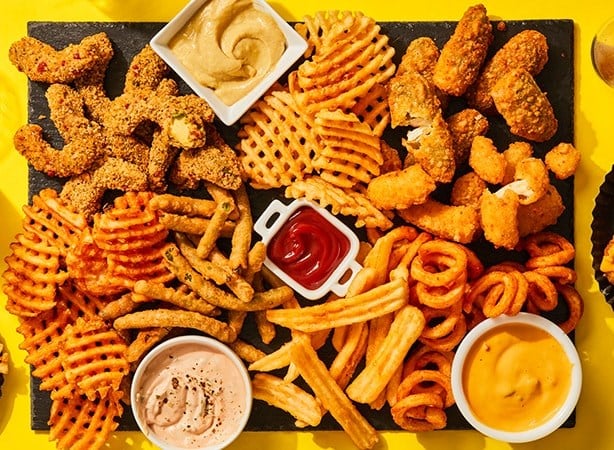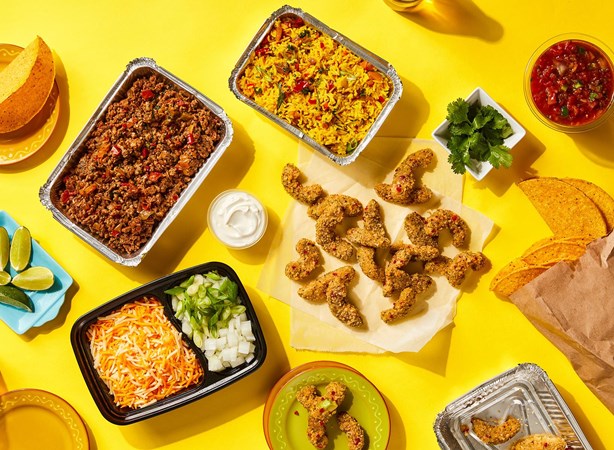
Delivery is a recognized revenue driver for operators wrestling with slack industry traffic. But less obvious is how some restaurateurs also are using delivery to fill dining room seats. The branded packaging, marketing collateral, coupons and digital platforms that connect with customers at home can also entice them to dine in the restaurant.
Today's operators can scarcely afford to neglect either delivery or dining room business. In the year ending September 2018, dining at a restaurant represented 37 percent of all visits and remained flat compared to the prior year, reports The NPD Group.
Restaurant meals consumed in-home accounted for 32 percent of all traffic and increased visits by 2 percent.
A restaurant brand can be part of consumers’ consideration for both on- and off-premise occasions, but it must meet their need states for both, according to the 2018 Takeout & Off-Premise Consumer Trend Report by Technomic. Dining at a restaurant allows consumers to socialize with others over a good meal, while off-premise orders are driven by convenience, Technomic notes.
Send a sales message with packaging
In addition to safeguarding the flavor, temperature and integrity of food, packaging used for delivery speaks to end users. “The restaurant and the customer do not necessarily interact when there is delivery,” says Lynn Dyer, president of the Foodservice Packaging Institute in Falls Church, Va. “Ultimately, the packaging is the only opportunity for the customer to associate with the brand. So using that packaging for branding and promotion is really critical.”
For example, Dickey’s Barbecue Pit customers who order home delivery aren’t savoring the aroma of slowly smoking brisket or enjoying the hospitality of staff as they do when seated in the restaurant. But they are getting a good whiff of Dickey’s brand identity from the extensive messaging on its to-go packaging.
Dickey’s sends delivery orders in a brown paper shopping bag bedecked with company slogans like “we speak barbecue” and “committed to meat, pure & simple.” Other statements on the bag announce that it’s a family-owned company, employs “real pit masters” and sources meats “with no b.s. (bad stuff).”
Similar statements appear on Dickey’s plastic Big Yellow Cup for beverages, which is potentially a lasting souvenir of the experience.
Sell the brand with attention-grabbing delivery boxes
Some operators have made group delivery and catering boxes into virtual billboards.
For example, Red Robin packs burgers for catering in the Gourmet Burger Bar box. The box is splashed with the company’s signature vivid red color scheme and catchphrase “Anything between two buns, topped to your perfection.” The Big Red Box is for toting specialties like chicken wings. “Catering in general is a really good marketing tool for the brand,” says Red Robin’s Brianna Schmaltz, director of alternate platforms at the Greenwood Village, Colo.-based chain. “You often serve customers who have never dined at your brand before. If they have a good experience, they’re going to crave that product and they're going to bring their families into the restaurant for other occasions.”
Bring ‘em back with impactful marketing materials
Providing coupons and marketing pieces to delivery customers — either digital or hard copy — can seed dining visits as well as stimulate future delivery orders, operators say.
“Coupons, flyers and bag stuffers with orders are great ways to drive transactions,”
“Adding extra touches like those can really help you generate sales and bring people into your restaurant who may not have dined there before.” First-time online delivery customers of Panera Bread get a $2-off coupon for their next online order. And further discounts can be theirs by joining the MyPanera loyalty program. Operators may also find support for delivery promotions in rebates and product samples from vendors.
Expand the menu to pump up delivery sales
Stoking the delivery boom is the ever-widening array of foods available at one’s doorstep — everything from appetizers and bar bites with sundry dipping sauces to chef-driven restaurant entrées. Speaking of the former, advancements in to-go packaging for hot foods that retain internal temperature and reduce condensation are allowing munchies like beer-battered fries, potato tots, stuffed jalapeños and fried onion rings to arrive at their craveable best. “Operators don’t want to limit their menu variety,” says Dyer. “They want to be able to deliver everything.”
Leverage digital pathways to grow delivery
Online and mobile ordering platforms are effective for marketing delivery — including limited-time offers and seasonal specials — to a wide range of consumers.
More Gen Z, millennial and Gen X consumers placed orders using an online method in the last year than by phone.
Even though boomers were far more likely than the others to order by phone, over half ordered online.
- At Panera Bread, In-Season offerings on the online menu during the holiday season feature items like Vegetarian Autumn Squash Soup, Mitten Cookie and Holiday Bread.
- Honey Butter Fried Chicken in Chicago touts monthly online specials for delivery like Sesame Ginger Potato Salad and Sichuan Wings.
- A QR barcode or Twitter hashtag on your delivery packaging “can help your story come alive” to digitally minded patrons, advises Dyer of the Foodservice Packing Institute.
Successful operators navigate multiple channels. Reaching out to customers with branded packaging, collateral materials and digital gateways helps them build their brands and ultimately grow traffic in both the dining room and delivery spaces.


